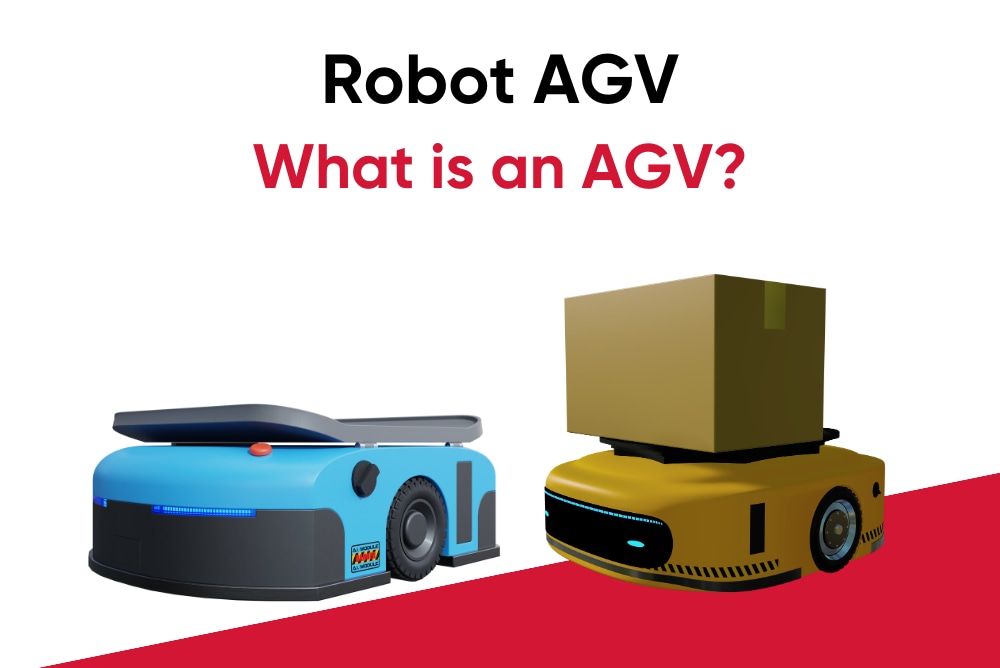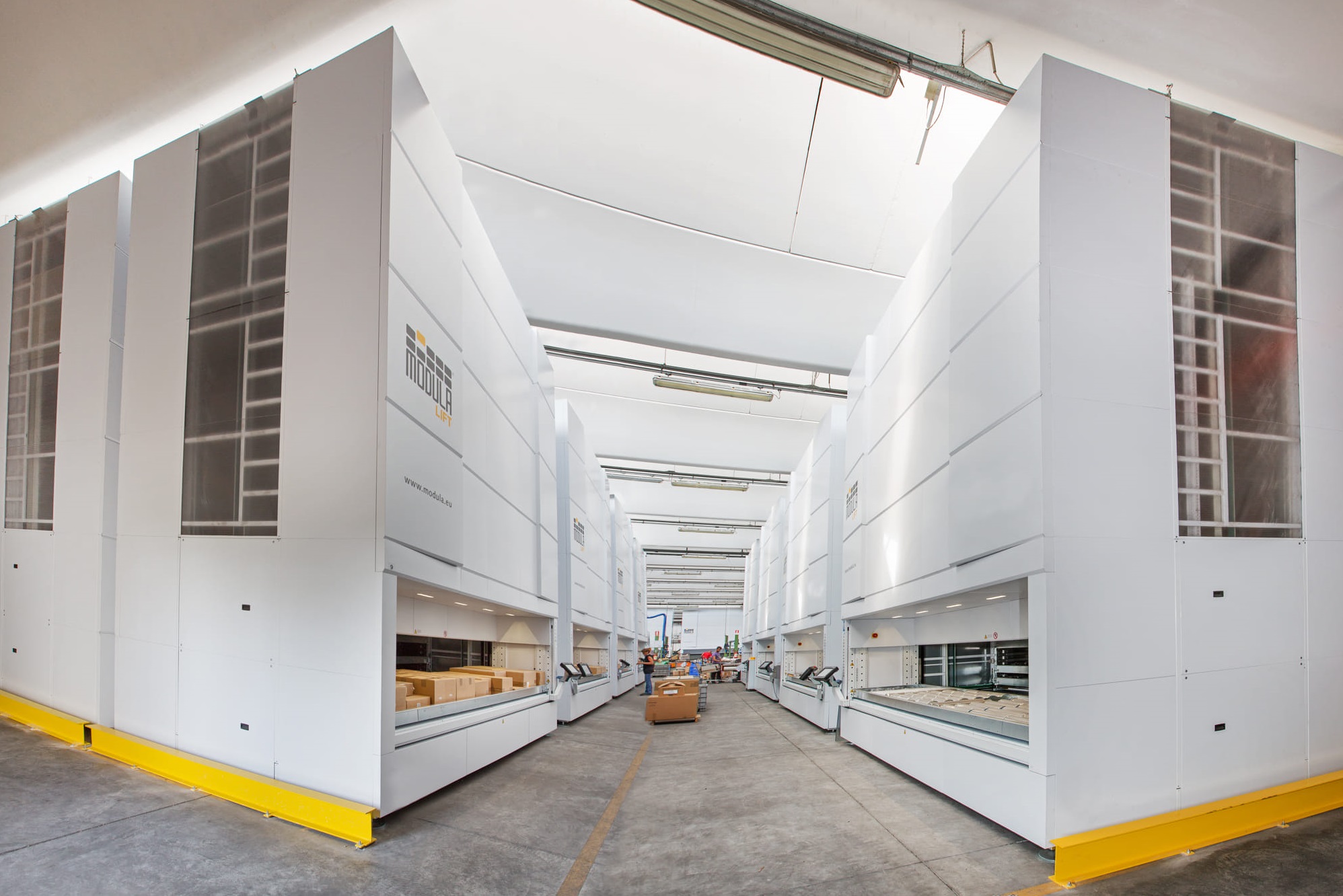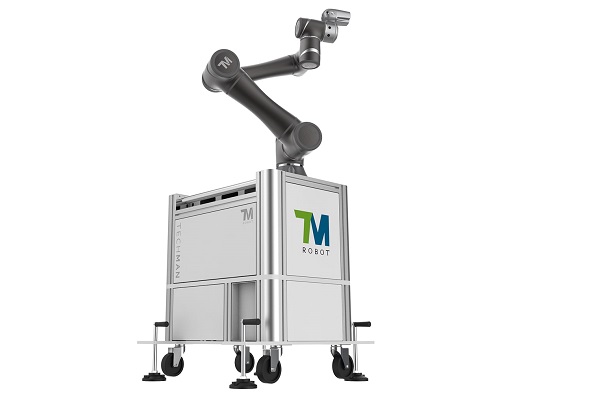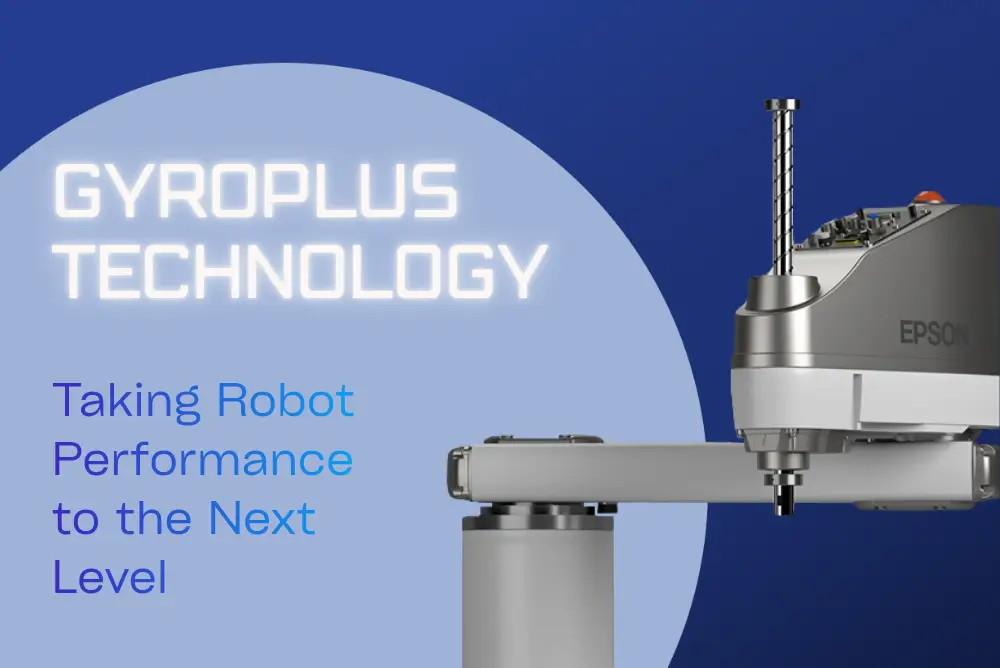AGV robots are applied in various industries, delivering high production efficiency. This article will cover four popular applications of AGV robots in industry, from goods transportation to warehouse management and flexible manufacturing.
What is an AGV Robot?
According to the definition compiled by Temas, an AGV (Automated Guided Vehicle) robot, also known as an autonomous AGV vehicle/towing robot/automated transport robot, is a type of vehicle that uses automated guidance technology to transport materials/goods to predetermined locations without human intervention.
Robot AGV
This robot is a key component in the development of smart warehouses and smart factories. AGV robots are utilized across various industries, including logistics, automotive, electronics, and consumer goods, etc.
Why choose AGV robots?
Increase Productivity and Efficiency
AGV robots optimize manufacturing and logistics processes by automating the transportation of goods and materials. Using AGV robots reduces waiting times, optimizes workflow, and enhances overall productivity.
These devices can operate continuously without breaks, eliminating interruptions in the workflow.
Enhance Flexibility and Diversity
AGV robots are designed to adapt to various work environments. They can operate in narrow spaces, high-risk manufacturing environments, or harsh conditions.
The diversity of AGV types also provides flexibility in choosing from simple transport-only AGVs to more complex ones capable of interacting with sophisticated automation systems.
Reduce Costs and Improve Safety
Utilizing AGV robots can minimize human errors during operations, reduce labor costs, and enhance workplace safety.
AGVs not only help prevent workplace accidents but also interact safely and efficiently with various devices and systems.
Operation of AGV Robots
All movements of an AGV robot are based on the following five components:
Positioning System
A precise and reliable positioning system is crucial for AGV operation. This includes technologies such as GPS, laser sensors, and absolute or relative position sensors to determine the robot's location and direction of movement.
Safety System
To ensure safety in the working environment, AGV robots are equipped with sensors, obstacle detection systems, and other safety measures. They are capable of automatically stopping or avoiding collisions when encountering unexpected obstacles.
Power System
The power system provides energy for the AGV robot. It includes batteries, charging systems, or mechanisms for continuous energy supply to maintain the robot's operation over extended periods.
Motion System
This component is responsible for the movement of the AGV robot. It may include wheels, automatic steering systems, motors, and other motion control mechanisms to adjust and navigate the robot.
Control System
The control system acts as the brain of the AGV robot, governing its entire operation. It can be programmed to perform various tasks, adjust speed, direction, and interact with other systems in the automation process.
Types of AGV Robots
Different types of AGV robots are designed to meet the transportation and movement needs of goods in various industrial and warehouse environments:
1. Cargo Transport AGVs
Optimized for transporting goods from one point to another within a warehouse or manufacturing facility.
Typically have a simple design with ample space to place pallets or goods.
Cargo Transport AGVs
2. Forklift AGVs
These AGVs are capable of lifting and moving large and heavy pallets or goods.
They may be equipped with automatic forks to load and unload goods from racks or hard-to-reach positions.
Forklift AGVs
3. Tugger AGVs
Designed to tow or transport carts or trailers to enhance transportation processes within a factory or warehouse area.
Often used to move large batches of goods from one point to another without individually moving each item.
Tugger AGV
4. Push/Pull AGVs
Designed to push or pull pallets or containers from one location to another.
Typically AGVs can autonomously push or pull goods without human intervention.
4 Common Applications of AGV Robots
Automated Goods Transportation
AGV robots are used to transport goods, pallets, or materials from one point to another within a manufacturing plant or warehouse area.
Automation optimizes the transportation process, reduces waiting times, and enhances production efficiency.
Smart Warehouse Management
AGV robots can be employed to move goods to storage locations, retrieve items from shelves, and sort them as needed.
Integrated with smart warehouse management systems, AGVs optimize storage space and efficiently manage inventory.
Automating Production Lines
In manufacturing environments, AGV robots are utilized to flexibly transport materials from raw materials to production machines.
This optimization streamlines production lines, reduces waiting times, and prevents disruptions in the manufacturing process.
Automated Goods Distribution in E-commerce
In the realm of e-commerce, AGV robots can automate the distribution of goods within central warehouses.
They can move to storage areas, pick items, and deliver them to packing or shipping zones autonomously, optimizing delivery processes and reducing order processing times.
These applications not only enhance productivity but also streamline workflows, reduce costs, and strengthen the competitive edge of businesses in today's manufacturing and logistics environments.
Advantages and Disadvantages of AGV Robots
| Advantages | Disadvantages |
|
|
Alternative Solutions to AGV Robots
Some alternative solutions to AGV robots in automated environments and goods transportation may include:
Automated Conveyor Systems
Using automated conveyor belts to move goods in a continuous line. This is a common solution in large-scale manufacturing environments with stable product flows.
Collaborative Robots (Cobot)
Cobots are robots designed to work alongside humans. In manufacturing environments, cobots can be used for handling and transporting goods based on cooperation with workers.
Autonomous Mobile Robots (AMR)
AMRs are highly sophisticated robots capable of navigating environments where they operate without the need for constant human supervision or fixed predefined paths. They understand their surroundings through installed sensors, allowing them to efficiently perform tasks and navigate the shortest possible routes while avoiding collisions without needing a fixed programmed route.
Learn more about AMR robots in the article: What is a robot AMR? AMR Robot application in the warehouse system


 Read more
Read more



